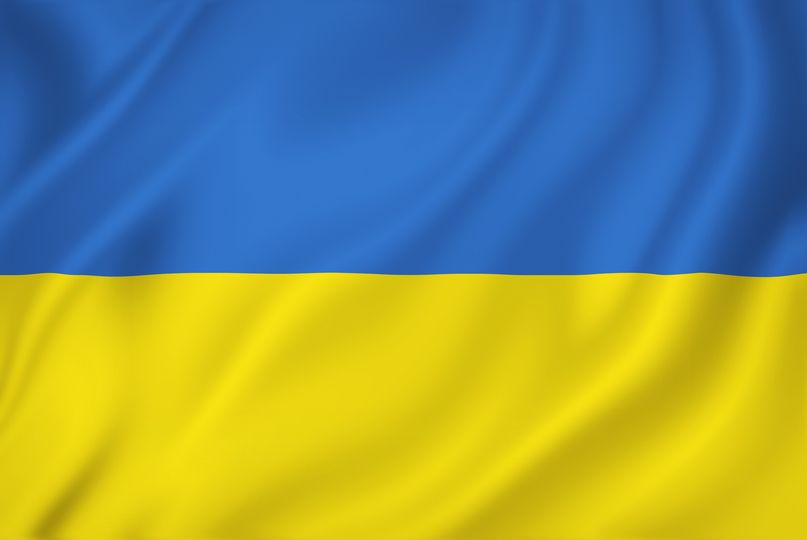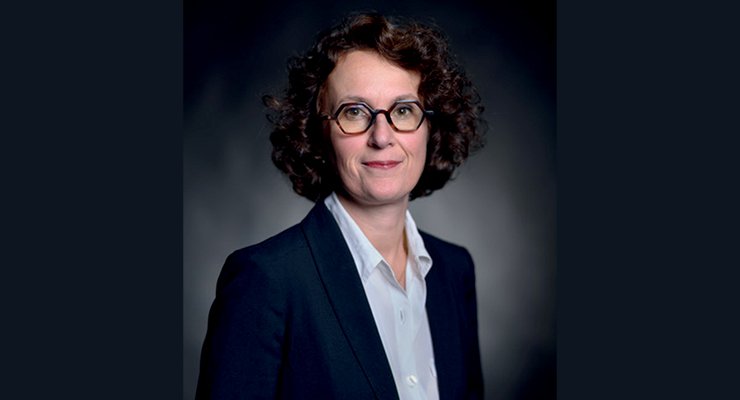Heuristics and Diagnostics for Complex Systems (Heudiasyc) – UMR CNRS 7253
Founded in 1981 and associated with the CNRS from the start, the mission of the UTC-Heudiasyc research unit is to carry out research into automation, decision-making, imaging and computing, taking human factors into account.
Objectives
The scientific project developed within Heudiasyc is based on the synergy between upstream, basic research and finalized, applied research, to meet society's main challenges: safety, transportation, STIC (Science and Technology for Information and Communication), environment and health in close collaboration with various professional partners, notably industrialists. Several platforms and demonstrators have been assembled in the laboratory and they illustrate perfectly the scientists' desire to confront their basic research work with complex application areas.
The objective is to provide the means of representing, analysing and controlling technical systems subject to criteria and constraints expressed in scientific, technological, economic terms and in terms of impact on society and the human population.
Teams and research topics
Heudiasyc is developing its activities with 3 research teams:
- Knowledge, uncertainty, data (CID),
- Safety, communication, optimization (SCOP),
- Robotic systems in interaction (SyRI).
Valorisation
Patents and licences (2011−2016)
- 10 patents filled and issued, involving members of the laboratory
- 4 international extensions, 3 extension requests in progress
- 5 softwares deposited with the APP (Agence de protection des programmes)
Plateforms
Implementation of the methods developed takes place on experimental test rigs in the laboratory: instrument fitted vehicles, drone fleets and mobile robots, sensor arrays, virtual reality (VR), railroad surveillance, inter-vehicle communication, tactile tables, distributed communication, etc.
Partnerships
At local level
Heudiasyc actively participates at all levels of university life (training, research, promotion, etc.). Collaboration with the various UTC laboratories takes place mainly within the framework of two transversal structures:
- Labex MS2T, "laboratoire d'excellence Maîtrise des systèmes de systèmes technologiques", of which Heudiasyc is the leader, in association with two research units of UTC and CNRS (BMBI, Roberval), since 2011.
- FR CNRS SHIC, research federation "Systèmes hétérogènes en interaction", since 2009.
At regional level
The Hauts-de-France Region (Picardy Region before 2016) provides research support in the form of funding for three-year projects. These projects are generally co-financed with the FEDER (European Economic and Regional Development Fund).
- 26 regional projects between 2011 et 2016
On a national level
The laboratory participates in the activities and animation of several CNRS research groups: MACS, Robotics, Operational Research, IGRV, ISIS, RSD, PréGdR IA.
Heudiasyc is also involved in many organizations or national authorities: CNRS (scientific advisor at INS2I), ANR (member of committees program evaluation), national authorities (CNU 61 and 27).
- 25 projects funded by the ANR between 2011 and 2016.
At an international level
The laboratory maintains close relations with many European and international partners, through projects, exchanges of researchers, joint thesis supervision (Algeria, Germany, Australia, Canada, China, United States, Italy, Lebanon, Poland, Thailand, etc. .).
Among the many collaborations, we will particularly mention:
- The French-Mexican laboratory for computer science and automatic control systems (LAFMIA), the first Franco-Mexican international joint unit (UMI) of the CNRS, in partnership with the GIPSA-lab laboratory and the Mexican research center CINVESTAV.
- Joint project with the Franco-Chinese laboratory of computer science, automation and applied mathematics (LIAMA) and "Key Laboratory of Machine Perception" of Peking University (China).
- 30 foreign visiting professors welcomed between 2011 and 2016 (individual stay> 1 month).
- 25 international projects and 24 European projects between 2011 and 2016.
Industrial partners
SIVALab (Systèmes intègres pour le véhicule autonome), created in 2017 by Renault and Heudiasyc, is a joint laboratory specializing in localization and perception systems for autonomous vehicles. This scientific and technological partnership is launched for four renewable years. It is the result of a partnership of more than ten years and is based on Heudiasyc's autonomous vehicle platforms, developed on the basis of the Renault Zoé.
- 164 theses funded between 2011 et 2016, including 25 with companies.
Projects
Within the context of regional projects, Heudiasyc is participating in 2 specializations for the Picardie Region's strategic plan for research :
- mobility factors and urban life,
- smart vehicles and a systemic analysis of passenger and freight mobility.
And two transverse priorities:
- health, life-styles
- education, learning, technologies
At the national level, the laboratory has accepted the challenge of the government incentive "Investments for the Future"; it both:
- holds the "Control of Technological Systems-of-Systems" Laboratory of Excellence award (Labex MS2T),
- and co-ordinates the mobile robotics section of the "Robotex" equipment of excellence.
UTC-Heudiasyc is an active participant in the two global competitive clusters:
- "i‑Trans", which covers innovative land transportation systems (Nord-Pas-de-Calais, Picardie),
- Systematic Paris-Région, cluster dealing with software and complex systems (Ile-de-France Region, Greater Paris).
It is involved in several Research Network Groups and collaborates with a number of laboratories both in France and abroad, in numerous research projects.
ANR projects
RéCIF an acronym for belief networks designed to assess Operating Safety parameters for rail-road infrastructures quantitatively. The aim is to investigate the facts and to propose solutions to model rail-road infrastructures using socalled belief networks.
DIADEM, an acronym for Dynamic DIAgnostics and Provisional Maintenance for Train mounted on-board systems. The aim of this project is to develop diagnosis and prognostics tools of the three 'sensitive' train devices (air-conditioning, brakesystems and door operations) that would enable real time potential forecasting before failure. This per se adds an improvement to maintenance work and to time-table compliance.
Ecopack is a project that focuses on new forms of collaborative work that have become possible by a computer-intensive socio-technical environment including various devices (tables, tactile pads, smartphones, PCs). One of the objectives is to offer a shared application accessible for each collaborator via these devices.
VEGAS is a project with the objective of designing, developing and assessing a virtual laboratory based on co-simulation, with two types of simulator. The first is an ERTMS simulator that models the system's functions. The second simulator is a telecomm system simulator that allows modelling of absolutely any form of telecommunications, from the physical layer to the application layer.
FUI projects
SERA : as we observe the development of aids to driving, there are new opportunities for an implementation of augmented reality techniques (computer generated images superimposed on reality) in a vehicle for the purpose of improving overall safety factors and drive-passenger comfort. The project calls for the assembly of a prototype vehicle integrating a camera image acquirement system and a wind-shield optical projection system to add the computer generated images (augmented reality) related to driver-useful data – the prototype prefigures self-drivevehicle 'cockpits'.
European projects
CoMoSeF (Co-operative Mobility Service for the Future) aims at creating services and equipment needed for a large implementation of co-operative applications in transport, complying with the ITS Action Plan as well as with national strategies of the other European partners.
MASH (MAssive Sets of Heuristics) is a project for the design of computer systems that assist and enhance collaborative development of new automated learning systems to ensure successful complex task management.
VERVE is a joint international research venture, involving UTC-Heudiasyc and the Technical University (TU) Ilmenau at Thüringen, Germany. The scientific objective assigned to the project is the development of a new concept for a "smart" all electric vehicle (SEV) that will contribute to smart, ecologically safe, transport systems to be tested in both the German Thüringen and French Picardie regions.
Picardie regional projects
CIME (Contextual Interactions for Mobility in Education) is a research programme that aims a creating computer based learning environments that are context sensitive to be implemented in mobile devices such as e‑pads or smartphones to be used to assist visits to museums and other heritage site.
SEDVAC (on-board vehicle dynamics assessment and driver aid) is a programme designed to develop a system that will integrate vehicle environment data (for example, maps, tyre-road surface forces …) so as to evaluate the dynamic behaviour of the vehicle and its impact on driver behaviour …and to possibly alert the driver should a risk-prone/abnormal situation occur.
ECHOPEDIA is a programme that aims at developing methods to restore and segment 3D pediatric echo-cardiac images for the purpose of exploring possible congenital cardio-pathologies.
ARAKIS is a programme to develop simulations of various hazardous work conditions (dangerous sub-contractor work in high risk zones (in 'Seveso' category sites notably).
Zoom on 2 projects
Contact and documentation
Contacts de la recherche à l'UTC



